The Mashriq al-adhkār, commonly known as the Lotus temple is an iconic symbol of modern Indian architecture. Located in the capital of India, the structure was designed as a Bahá’í House of Worship by Iranian architect Fariborz Sahba. The Lotus temple, New Delhi not only serves as a place of worship but is also a significant monument of India and attracts several tourists throughout the year. It is often referred to as the 20th century Taj Mahal due to its similarities and grandeur.
The structure has received several citations and honors as well for its splendor and structural integrity.
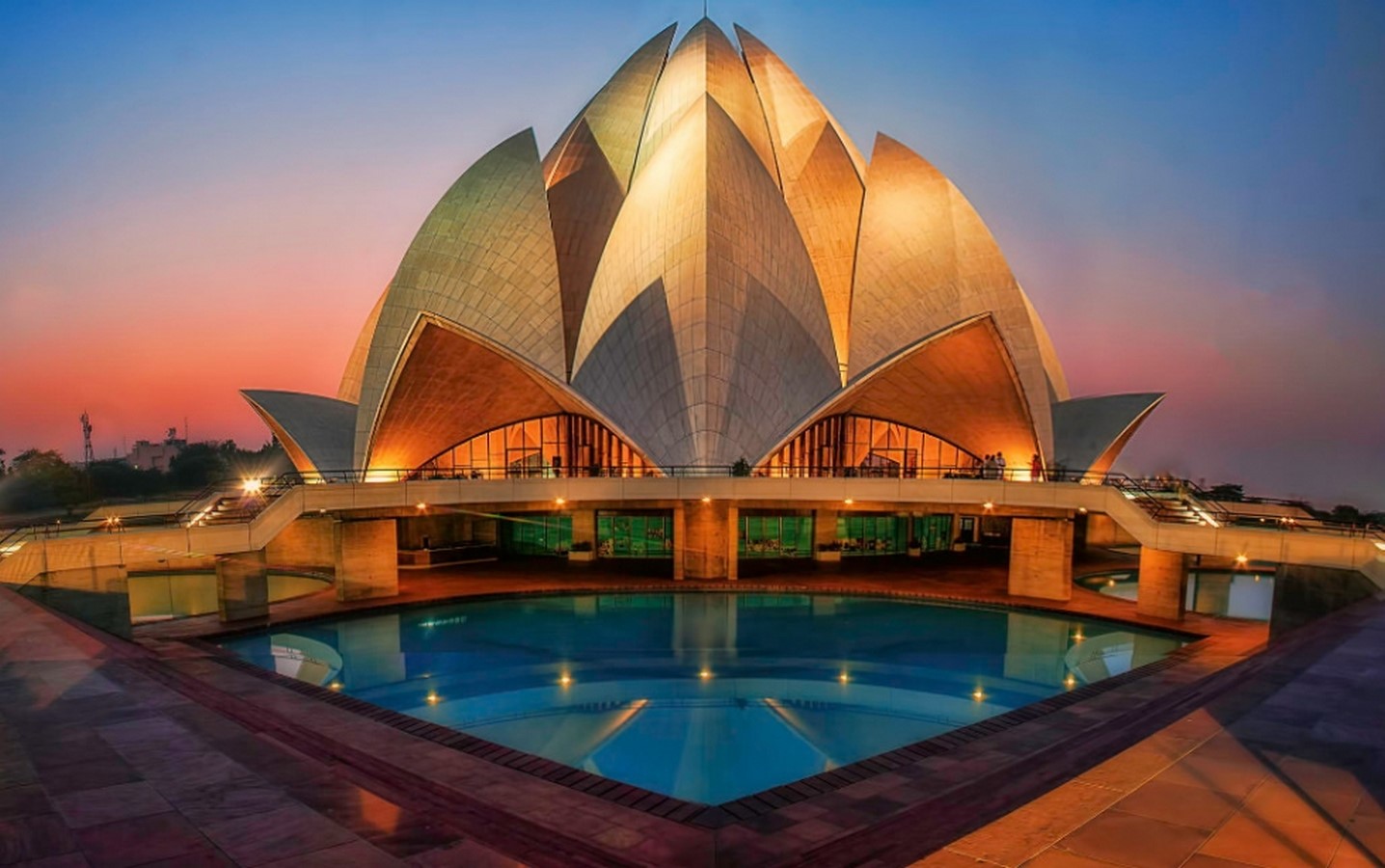
- The Bahá’í religion was founded by Baha’u’llah in the 19th century and is said to be one of the oldest and most sought-after religions in the world. It emphasizes the unity of mankind in terms of spirituality. Hence, the Lotus temple is open to all irrespective of their religion, sex, and caste.
- The Lotus temple is one of the 7 Bahá’í houses of worship spread across the world. Like all other Bahá’í houses of worship, the lotus temple is characterized by a nine-sided construction. However, it is the only house of worship in which the dome of the structure has been concealed.
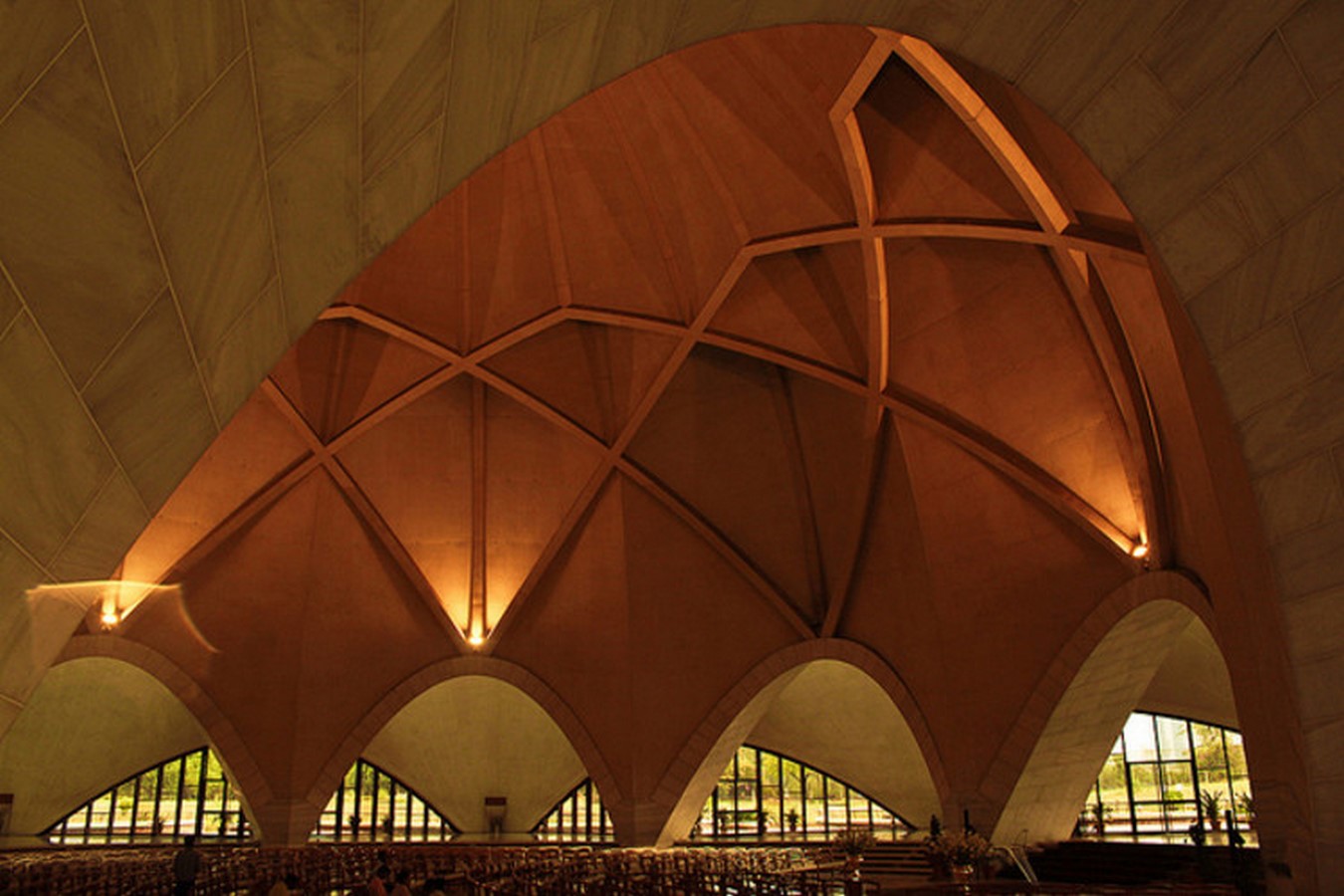
- The chief architect, Fariborz Sahba, traveled to India to study the country’s architecture before he began designing it in 1976. The construction of the Lotus temple took place in stages and was completed in 1986.
- The Lotus temple, New Delhi has an expressionist style of architecture. The form of the building represents a lotus as the flower symbolizes purity and tenderness. It is also an emblem that is common across various religions.
- The external structure is formed by 27 petals, arranged in clusters of three. The first cluster forms the worship space, the second acts as a roof for ancillary spaces while the third cluster forms canopies over the nine entryways. The petals spring from a podium to elevate it from the surrounding plain.
- The central hall of the temple can seat 2,500 people at a time and has no idols, photographs of deities, or altars. The hall has a span of 34 meters and is a little over 33.6 meters in height. It is surrounded by nine arches at regular intervals, which provides support for the superstructure.
- Natural lighting and ventilation have been optimized in the design. The superstructure is designed to function as a skylight. The glazing used for the 3 ranks of petals i.e. at the apex of the innermost petals, underneath the outer petals, and the external side of the entrance petals allows the entry of diffused light into the worship hall in the same way that it passes through the petals of a lotus flower. The interior spaces are kept cool by the movement of cool air above the surrounding pools into the structure.
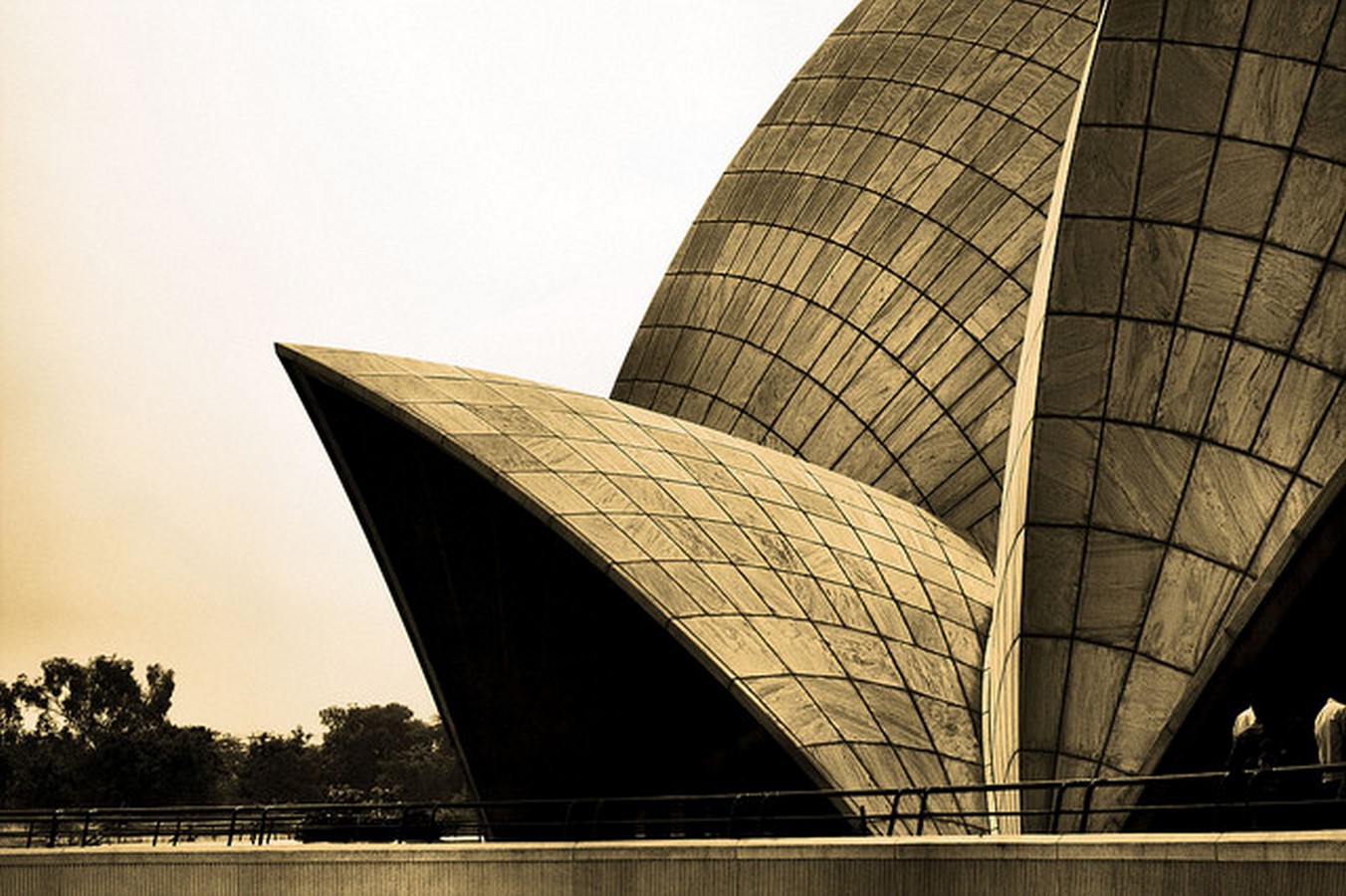
- While most places of worship have intricate columns, writings, and symbols, the two fundamental elements used for ornamentation of the structure are light and water. The temple is surrounded by native vegetation, balustrades, walkways along with the nine pools. The pools depict the leaves of the lotus and create an illusion of a lotus floating on water.
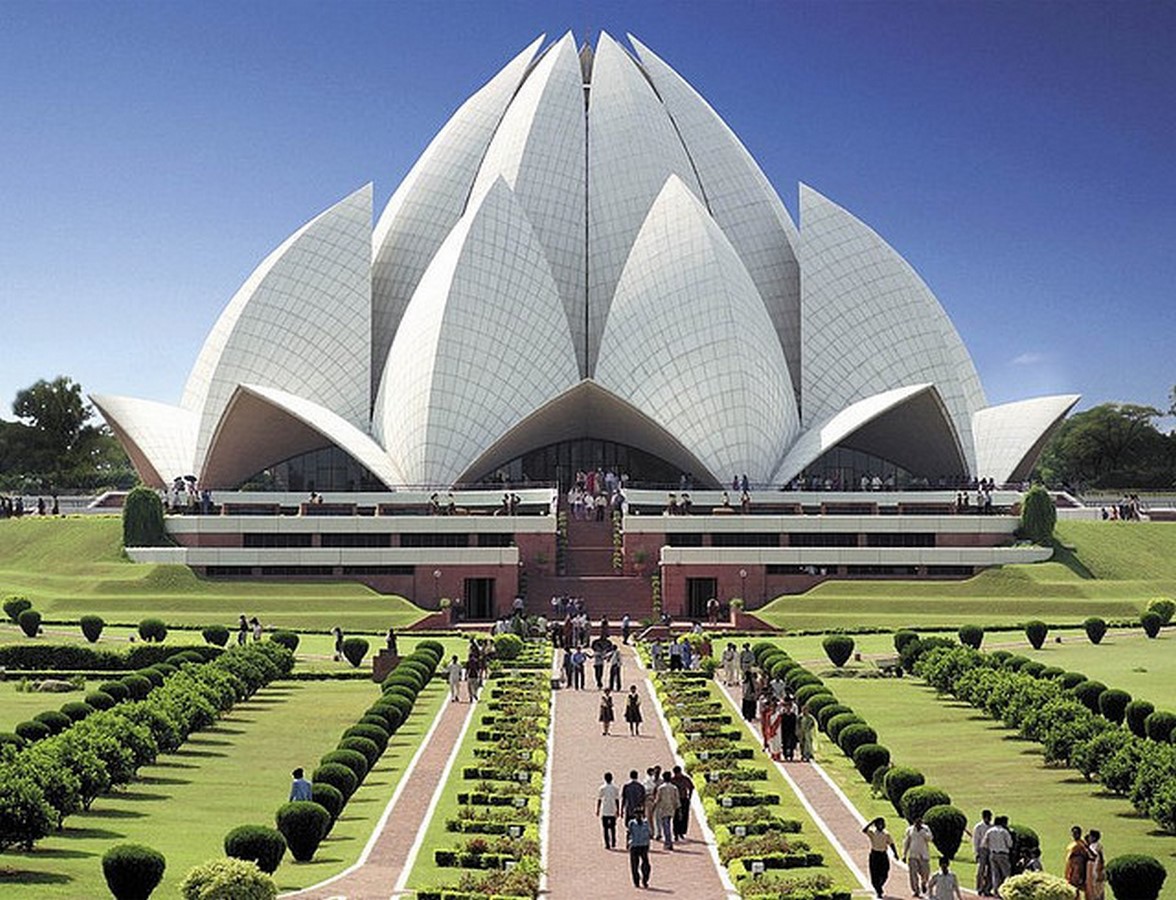
- The temple is made of concrete shells and has marble panels as cladding. The marble was obtained from Penteli mountain in Greece, the very same from which several ancient monuments and other Bahá’í Houses of Worship are built. More than 10,000 different sizes of marble were used in the construction of the structure due to its complicated design.
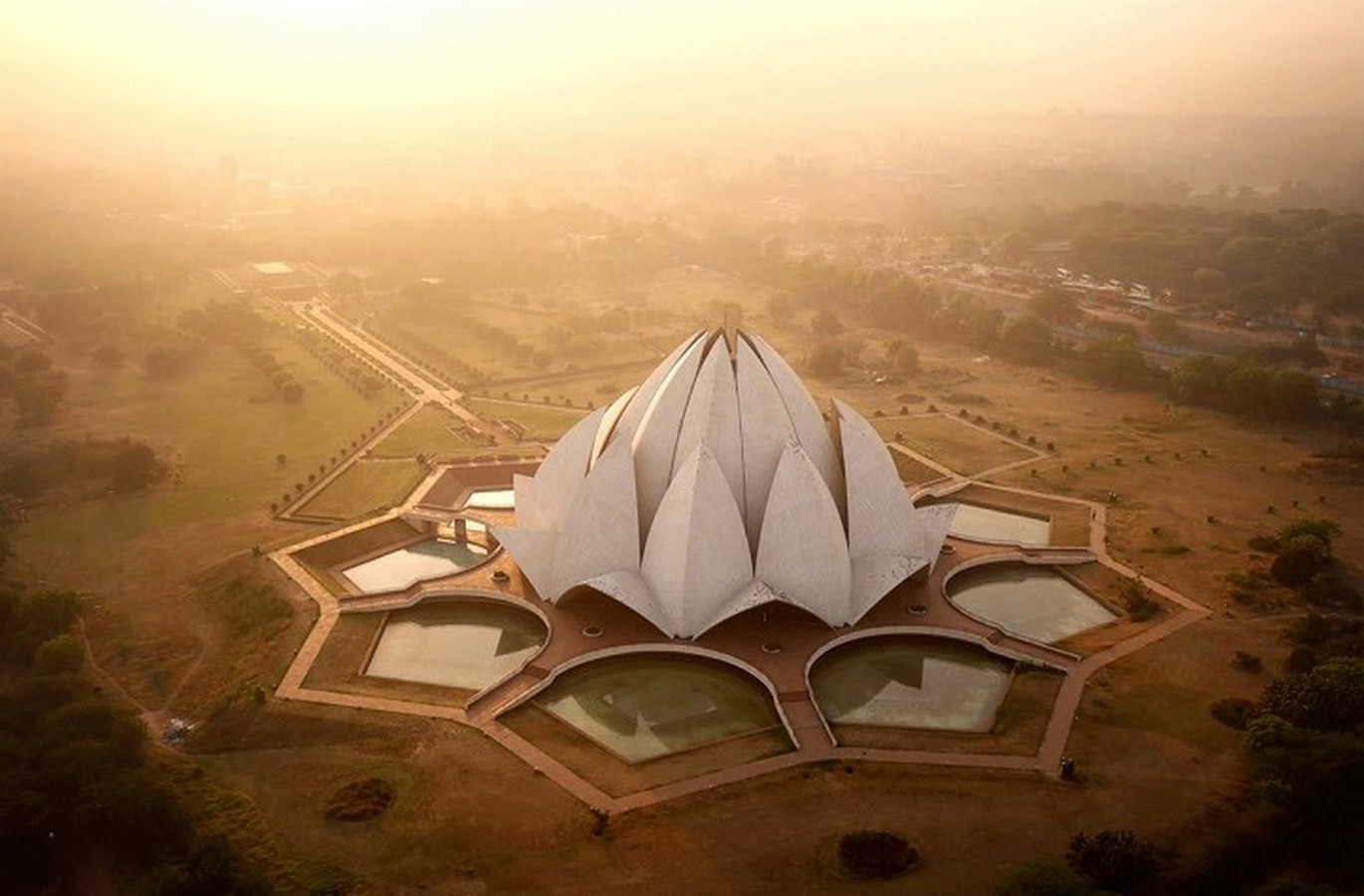
- It is the first temple in Delhi to make use of solar panels; 120 kW of energy out of the 500 kW that the temple makes use of, is generated by the panels.
















